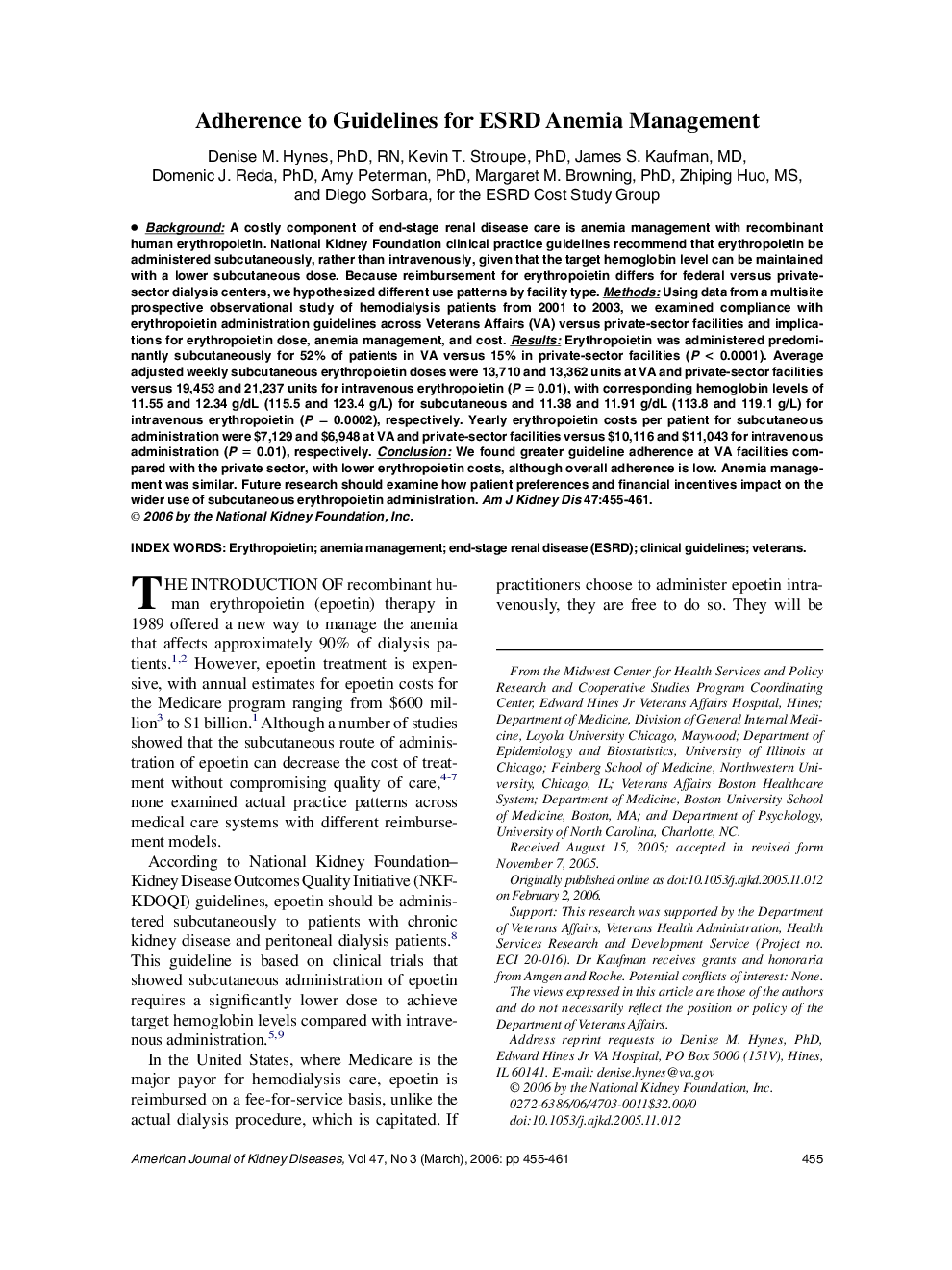| Article ID | Journal | Published Year | Pages | File Type |
|---|---|---|---|---|
| 3850393 | American Journal of Kidney Diseases | 2006 | 7 Pages |
Abstract
Background: A costly component of end-stage renal disease care is anemia management with recombinant human erythropoietin. National Kidney Foundation clinical practice guidelines recommend that erythropoietin be administered subcutaneously, rather than intravenously, given that the target hemoglobin level can be maintained with a lower subcutaneous dose. Because reimbursement for erythropoietin differs for federal versus private-sector dialysis centers, we hypothesized different use patterns by facility type. Methods: Using data from a multisite prospective observational study of hemodialysis patients from 2001 to 2003, we examined compliance with erythropoietin administration guidelines across Veterans Affairs (VA) versus private-sector facilities and implications for erythropoietin dose, anemia management, and cost. Results: Erythropoietin was administered predominantly subcutaneously for 52% of patients in VA versus 15% in private-sector facilities (P < 0.0001). Average adjusted weekly subcutaneous erythropoietin doses were 13,710 and 13,362 units at VA and private-sector facilities versus 19,453 and 21,237 units for intravenous erythropoietin (P = 0.01), with corresponding hemoglobin levels of 11.55 and 12.34 g/dL (115.5 and 123.4 g/L) for subcutaneous and 11.38 and 11.91 g/dL (113.8 and 119.1 g/L) for intravenous erythropoietin (P = 0.0002), respectively. Yearly erythropoietin costs per patient for subcutaneous administration were $7,129 and $6,948 at VA and private-sector facilities versus $10,116 and $11,043 for intravenous administration (P = 0.01), respectively. Conclusion: We found greater guideline adherence at VA facilities compared with the private sector, with lower erythropoietin costs, although overall adherence is low. Anemia management was similar. Future research should examine how patient preferences and financial incentives impact on the wider use of subcutaneous erythropoietin administration.
Related Topics
Health Sciences
Medicine and Dentistry
Nephrology
Authors
Denise M. PhD, RN, Kevin T. PhD, James S. MD, Domenic J. PhD, Amy PhD, Margaret M. PhD, Zhiping MS, Diego Sorbara, ESRD Cost Study Group ESRD Cost Study Group,
